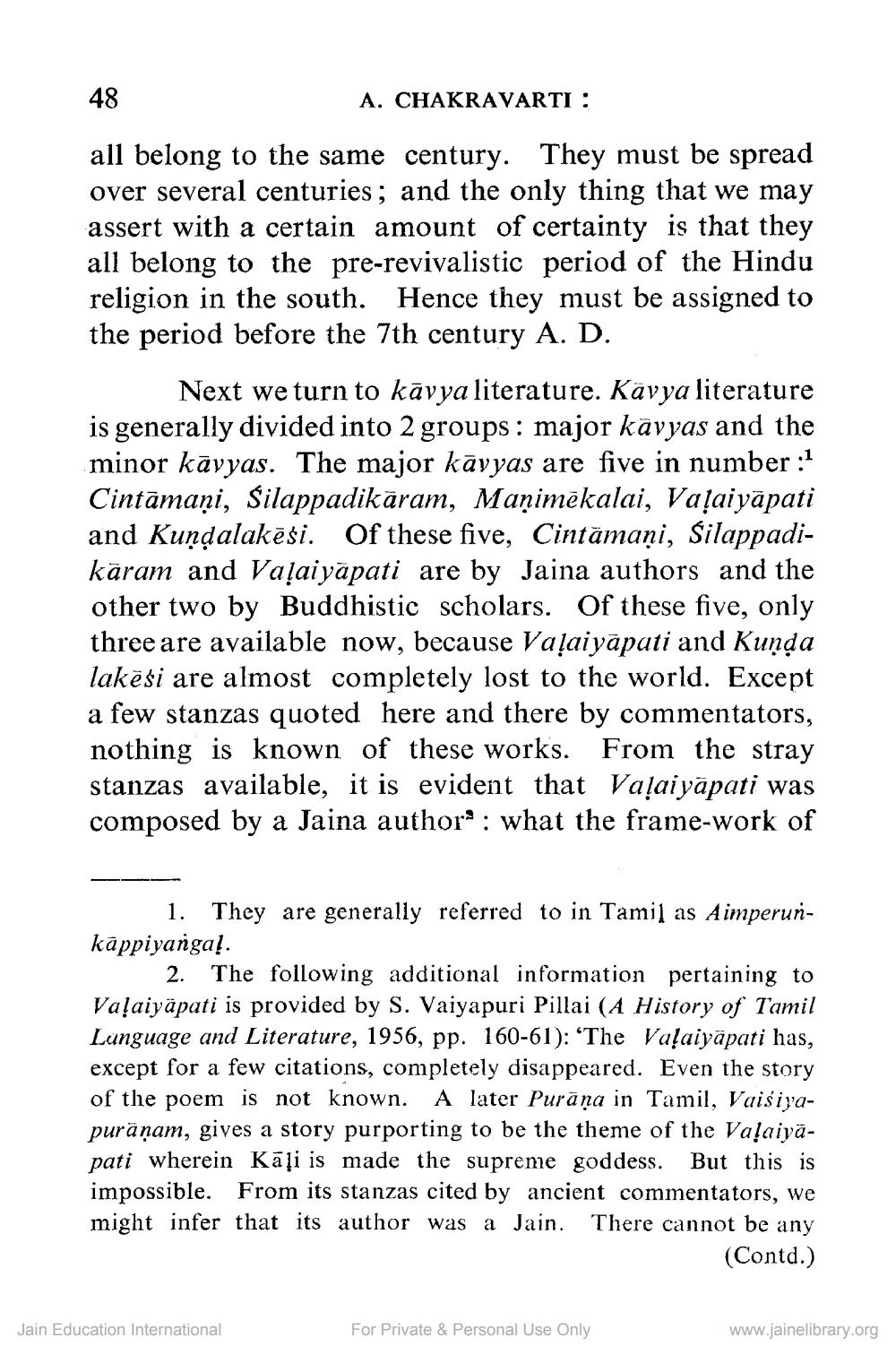________________
48
A. CHAKRAVARTI :
all belong to the same century. They must be spread over several centuries; and the only thing that we may assert with a certain amount of certainty is that they all belong to the pre-revivalistic period of the Hindu religion in the south. Hence they must be assigned to the period before the 7th century A. D.
Next we turn to kavya literature. Kavya literature is generally divided into 2 groups: major kāvyas and the minor kavyas. The major kavyas are five in number:1 Cintamani, Silappadikāram, Maṇimēkalai, Vaļaiyāpati and Kundalakēsi. Of these five, Cintamani, Silappadikāram and Valaiyapati are by Jaina authors and the other two by Buddhistic scholars. Of these five, only three are available now, because Vaļaiyāpati and Kuṇḍa lakėsi are almost completely lost to the world. Except a few stanzas quoted here and there by commentators, nothing is known of these works. From the stray stanzas available, it is evident that Valaiyāpati was composed by a Jaina author: what the frame-work of
1. They are generally referred to in Tamil as Aimperunkāppiyangal.
2. The following additional information pertaining to Valaiyapati is provided by S. Vaiyapuri Pillai (A History of Tamil Language and Literature, 1956, pp. 160-61): 'The Valaiyapati has, except for a few citations, completely disappeared. Even the story of the poem is not known. A later Purana in Tamil, Vaisiyapurāṇam, gives a story purporting to be the theme of the Valaiyapati wherein Kali is made the supreme goddess. But this is impossible. From its stanzas cited by ancient commentators, we might infer that its author was a Jain. There cannot be any
(Contd.)
Jain Education International
For Private & Personal Use Only
www.jainelibrary.org




